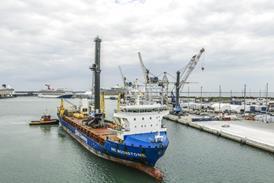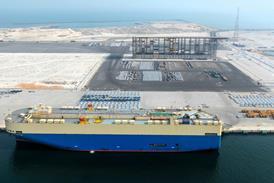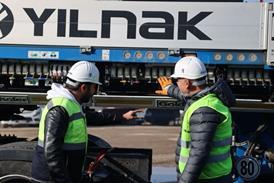March 14 - Speaking at the freight industry forum, TOC Container Supply Chain Asia in Hong Kong, TT Club's director of global risk assessment, Laurence Jones highlighted the key factors that cause disruption throughout the global supply chain and spoke of
Based on an extensive analysis of TT Club's claims, valued in excess of USD120 million, Jones revealed that nearly 80 percent of incidents resulting in a claim were avoidable and the vast majority involved some form of human error. In urging operators to pay heed to the lessons of TT's analysis, Jones said, "We found that the adoption of proven operational procedures and available safety technology could prevent many of the incidents. Relatively small investments in training, and maintenance could bring significant commercial benefits through less disruption to operations, lower insurance premiums and more satisfied customers."
In terms of causal effect the analysis showed that 63 percent of the total cost (as opposed to the number) of claims were due to operational factors, with maintenance (or lack of it) accounting for a further third; leaving those lacking human intervention, mainly weather related incidents contributing only four percent of the cost.
When it comes to the movement of freight around the world, TT Club's experience concludes that the prevention of many claims lies in efficient and well constructed processes and the analysis presented by Jones reinforced this belief. 43 percent of the cost of claims resulting from operational factors was as a consequence of errors or faults in an operator's systems or processes.
"While straight forward theft accounted for 29 percent of operational claims, poor processes and systems were the biggest culprit," Jones demonstrated. "A whole range of substandard practices were in evidence, such as bad stowage and handling; customs fines due to incorrect or late paperwork; poor instruction on management of refrigeration equipment; and wrong release of cargo. All such claims could have been avoided with tighter procedures." (See chart below)
The other major contributor to damage and cost was found to be fire destroying property, equipment and cargo. Most building damage came from electrical faults; for lifting equipment, a lack of sufficient, regular maintenance checks was the main cause and fire in container cargo was mainly due to poor stowage or mis-declaration of the goods. Each factor, argued Jones could be mitigated by adequate attention by either operators or shippers.
TT Club's intention by presenting this analysis is to reduce loss and damage in freight movement by encouraging awareness among freight forwarders and logistics service providers of their ability to reduce inefficiencies of an increasingly complex, and often fragile global supply chain. Such measures are varied and require a degree of planning, careful management and some financial investment but as customer expectations become ever more stringent the commercial necessity of risk mitigation is obvious. As Laurence Jones concludes, "In analysing the causes of disruption, we seek solutions through the development of good practice for our industry". TT Club has a wealth of published material to support the reduction of risk.
Claims due to errors in operators systems or processes
















